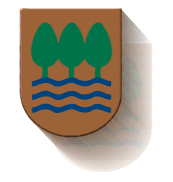 |
The
European Social Fund (ESF), the objective of which was to foment
employment and workers' mobility in the Single Market, was the first
instrument of the Community Struc-tural Policy together with the
European Investment Bank. The FEOGA, European Agri-cultural Guidance
and Guarantee Fund was also created in the early 70s to promote
development of rural areas, but the inequalities in the degree of
development among the different regions became manifest in the 70s
with the economic crisis and the first expan-sion. Then, in 1975,
the European Regional Development Fund or ERDF was created. Starting
then, it was considered that the evident differences among the member
States were not particular problems of each State, but rather a
common problem that required global and solidary solutions through
the articulation of a true Community Regional Policy. This fact
was explicit in the 1988 reform of the Common Regional Policy, which
ordered the community aid to member States in terms of functional
criteria, identifying areas that required priority attention, and
regional criteria and fomented co-ordination among the different
funds.
Finally, in 1993, the Cohesion Fund was created. It was designed
specifically to propitiate the economic convergence of the most
backward States by emphasising issues related to infrastructures
and environment. The Spanish State began to perceive community aid
after adhering to the then-called EEC in 1986. The BCAC wholeheartedly
subscribed this community policy after the 1988 reform, which extended
to Autonomous Communities the possibility of perceiving regional
aid.
In recent years, Gipuzkoa has accessed, through different projects,
programmes and ini-tiatives, an important amount of community funds,
which have been managed by differ-ent levels of the Administration,
among which the Diputación Foral de Gipuzkoa has played a
decisive role.
|



